Additional Information
Book Details
Abstract
Providing accessible tools for carrying out gender-sensitive analyses of current situations, this book includes frameworks for analysing systems, institutions and policies allowing the reader to think through the problems clearly and to develop constructive alternatives. This book is a companion volume to the Guide to Gender-Analysis Frameworks - a guide to using gender-analysis frameworks in development work. This companion will apply four frameworks: the Harvard framework, the women's empowerment approach, the gender analysis matrix and the social relations approach to the analysis of a variety of educational contexts, including national education policies and projects, schools, colleges, ministries, teaching and learning materials and school and teacher training curricula.Aimed at policy makers and planners, academics, researchers and students, development agency and practitioners, each chapter presents a tool for gender analysis, and discusses its methodology and its uses, as a means of supporting gender mainstreaming. The book provides practical examples of how the tool can be used and highlights their strengths and disadvantages.
Table of Contents
| Section Title | Page | Action | Price |
|---|---|---|---|
| Contents | v | ||
| Acknowledgements | vii | ||
| Acronyms | viii | ||
| Chapter 1 Introduction | 1 | ||
| Chapter 2 Key concepts in gender and education | 16 | ||
| Chapter 3 Choosing your gender analysis tools | 29 | ||
| Chapter 4 The Harvard Framework | 36 | ||
| Chapter 5 Women’s Empowerment Framework (Longwe) | 56 | ||
| Chapter 6 Gender Analysis Matrix | 71 | ||
| Chapter 7 The Social Relations Approach | 86 | ||
| Chapter 8 Curriculum-materials analysis | 102 | ||
| Chapter 9 Participatory tools for analysis and action | 124 | ||
| Notes | 150 | ||
| Bibliography | 152 | ||
| Index | 158 |
